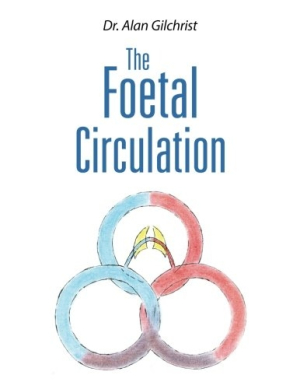It looks like you've stumbled upon a page meant to be read by our code instead of viewed directly. You're probably looking for this page.
The Foetal Circulation
Gilchrist’s ideas deserve further exploration by others in the research community.
Alan Gilchrist’s The Foetal Circulation is a revision of his earlier works on the subject, bolstered by his extensive review of the literature of fetal anatomy and physiology. His view is that the orthodox understanding of several key structures and functions of fetal circulation is wrong; Gilchrist elaborates on such points throughout the book, punctuated by reminiscences of his time in Africa.
Alan Gilchrist served many years in federal and Rhodesian medical services as a general practitioner in present-day Zimbabwe and Malawi. It was at his post in Fort Victoria—now Masvingo—in 1965 that Gilchrist first dissected a stillborn little girl’s heart and became fascinated with fetal and neonatal anatomy.
The subject is obviously complex and highly specialized, and the book will be of most interest to health-care practitioners and researchers. However, Gilchrist meticulously hones his theories about how fetal circulation operates, and introduces his findings in a highly organized way. The work includes a simplified sketch of the fetal circulation system that highlights the pertinent parts in blue and red as the book tours and discusses each section in turn.
The most absorbing part of the book illuminates the fascinating changes that occur as a fetus becomes a baby. Gilchrist succinctly describes the swift, synchronized series of anatomical and physiological changes that come as a fetus is expelled from the birth canal and takes its first breath in newly expanded lungs. Here, the illustrations help quite a lot, showing how previously dormant anatomical features spring into action, and how others shift function or change position.
The writing is most effective when it stays on course with detailed medical observations and theories. The book’s focus on Gilchrist’s intriguing, alternative scientific explorations is dampened by the frequent, often repetitive, insertion of complaints about his perceived mistreatment in previous hospital positions and the loss of various notes and drawings.
While it is interesting to have some background about the doctor’s various medical posts and the scope of his work as a physician with a large forensic caseload, the book often veers off course from its central topic of fetal circulation to deliver such information, as when it devotes pages to descriptions and sketches of patients with shingles. It also curiously refers to fetuses and babies as “creatures” on many occasions.
As the author notes, the anatomy of the fetus is hard to explore; it is designed to be well protected by three barriers: the mother’s body, the uterus, and the fetus’s own body wall. There are undoubtedly many more secrets to learn about fetal and neonatal medicine, and Gilchrist’s ideas deserve further exploration by others in the research community. This book is best when it is focused on these scientific aspects.
Reviewed by
Rachel Jagareski
Disclosure: This article is not an endorsement, but a review. The publisher of this book provided free copies of the book and paid a small fee to have their book reviewed by a professional reviewer. Foreword Reviews and Clarion Reviews make no guarantee that the publisher will receive a positive review. Foreword Magazine, Inc. is disclosing this in accordance with the Federal Trade Commission’s 16 CFR, Part 255.
